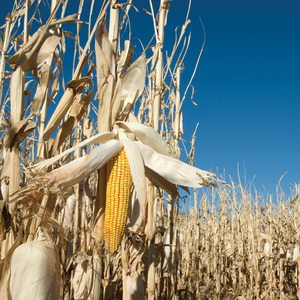USDA lowers forecast for corn use in ethanol in April WASDE

April 9, 2019
BY Erin Krueger
The USDA has reduced its 2018-’19 forecast for corn use in ethanol by 50 million bushels, to 5.5 billion bushels, in its latest World Agricultural Supply and Demand Estimates report, released April 9.
In the report, the USDA said this month’s 2018-’19 U.S. corn outlook is for lower feed and residual use, reductions for corn used for ethanol and exports, and larger stocks.
The forecast for feed and residual use is lowered 75 million bushels to 5.3 billion based on corn stocks reported as of March 1, which indicated disappearance during the December-February quarter declined approximately 9 percent relative to a year ago.
Advertisement
Advertisement
Corn use for ethanol production is lowered 50 million bushels to 5.5 billion based on the most recent data from the USDA’s Grain Crushings and Co-Products Production report, and the pace of weekly ethanol production during March as indicated by U.S. Energy Information Administration data.
The USDA has reduced its forecast for corn use in ethanol several times in recent months. The December WASDE report predicted 5.6 billion bushels of corn would go to ethanol production in 2018-’19. The agency did not release a January WASDE report due to the government shutdown. The February report reduced the forecast to 5.575 billion bushels, while the March WASDE report further lowered the forecast to 5.55 billion bushels. Approximately 5.605 billion bushels of corn went to ethanol production in 2017-’18, up from 5.432 billion bushels in 2016-’17, according to USDA data.
The April WASDE report also reduces the forecast for corn exports by 75 million bushels, to 2.3 billion, reflecting current outstanding sales and expectations of increased competition from Brazil, Argentina, and Ukraine.
With supply unchanged and use declining, ending stocks are raised 200 million bushels, to 2.035 billion. The season-average corn price received by producers is unchanged at a midpoint of $3.55 per bushel.
Advertisement
Advertisement
Internationally, the forecast for corn production in Brazil is raised, reflecting improved yield prospects for second-crop corn. Argentina corn is also revised higher based on expectations of larger area. The forecast for corn production is raised for the EU, Mexico, and Indonesia, with reductions for the Philippines and Pakistan.
Major global trade changes for 2018-’19 include higher projected corn exports for Brazil, Argentina, the EU, and Ukraine, with a partially offsetting reduction for the U.S. The report also increases the forecast for corn imports for the EU and South Africa, with lower projections for Vietnam and Bangladesh. Foreign corn ending stocks for 2018-’19 are raised from last month, mostly reflecting increases for Mexico, Indonesia, and South Africa that more than offset declines for Vietnam, Brazil, Pakistan, Bangladesh and Argentina.
Related Stories
The U.S. Energy Information Administration maintained its forecast for 2025 and 2026 biodiesel, renewable diesel and sustainable aviation fuel (SAF) production in its latest Short-Term Energy Outlook, released July 8.
XCF Global Inc. on July 10 shared its strategic plan to invest close to $1 billion in developing a network of SAF production facilities, expanding its U.S. footprint, and advancing its international growth strategy.
U.S. fuel ethanol capacity fell slightly in April, while biodiesel and renewable diesel capacity held steady, according to data released by the U.S. EIA on June 30. Feedstock consumption was down when compared to the previous month.
XCF Global Inc. on July 8 provided a production update on its flagship New Rise Reno facility, underscoring that the plant has successfully produced SAF, renewable diesel, and renewable naphtha during its initial ramp-up.
The U.S. EPA on July 8 hosted virtual public hearing to gather input on the agency’s recently released proposed rule to set 2026 and 2027 RFS RVOs. Members of the biofuel industry were among those to offer testimony during the event.
Upcoming Events










